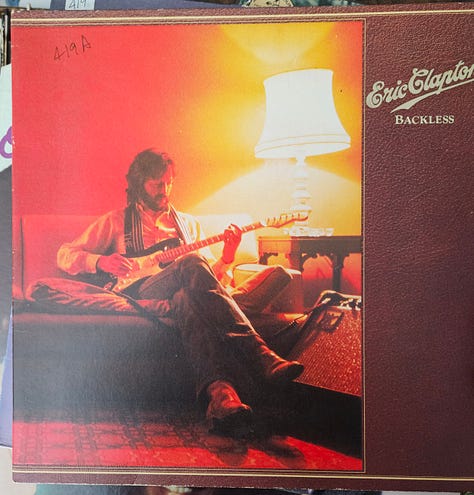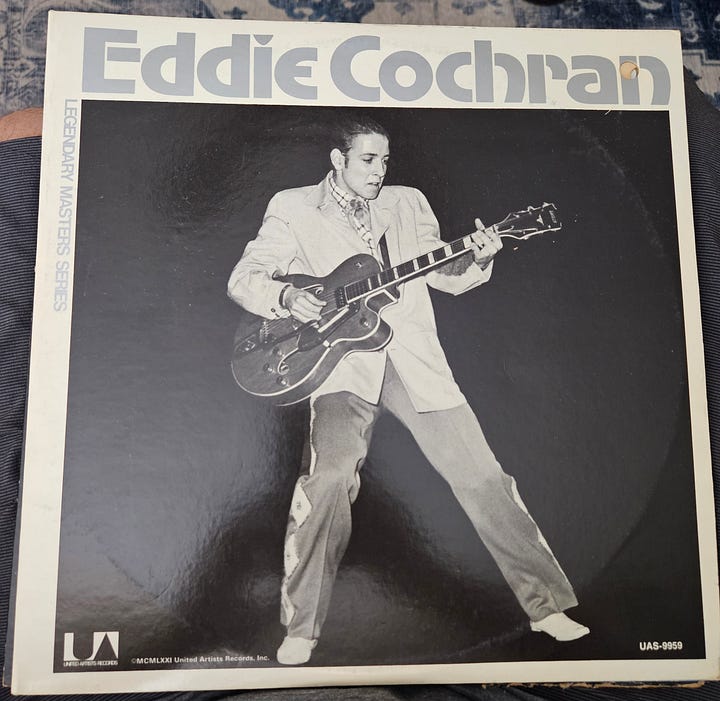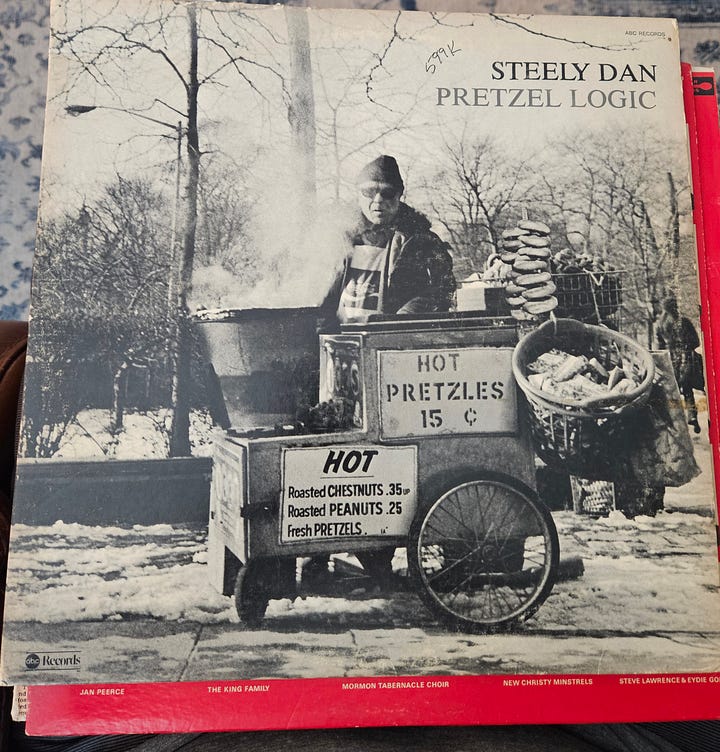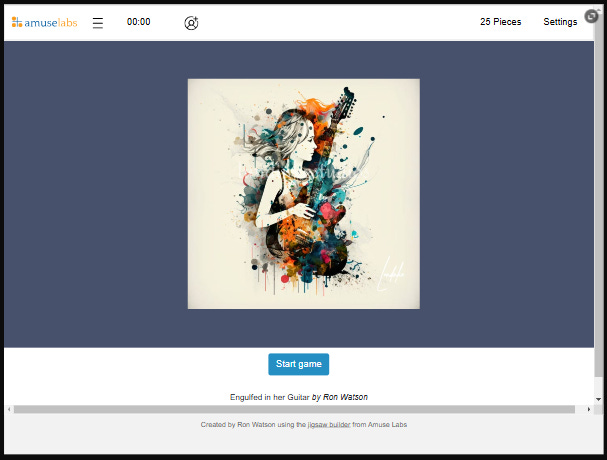Iconic Album Covers That Defined Music History
Explore the visual masterpieces that shaped music culture and discover the stories behind your favorite album art
Joke Interaction:
Classical Guitarist: (with a playful smirk)
“How many heavy metal players does it take to change a lightbulb?”
Heavy Metal Guitarist: (grinning, leaning in to hear the punchline)
“No idea. How many?”
Classical Guitarist:
“None! They just play in the dark!” 🎸😄
Heavy Metal Guitarist: (laughs, then quips back)
“Good one! But tell me, how many classical guitarists does it take to change a lightbulb?”
Classical Guitarist:
“I don’t know, how many?”
Heavy Metal Guitarist:
“Just one—but it’ll take them a month to practice it first!” 🎶😂
A classic record album cover is more than just packaging—it’s a cultural touchstone. These covers capture the spirit of their eras and become inseparable from the music they represent.
Album covers from the 1960s, 1970s, and 1980s reflect profound cultural, artistic, and technological shifts, serving as visual counterparts to the evolving music of these iconic decades. In the 1960s, album covers emerged as artistic statements driven by the countercultural revolution, which embraced psychedelic art, surrealism, and politically charged messages. The Beatles’ Sgt. Pepper's Lonely Hearts Club Band (1967), designed by Peter Blake and Jann Haworth, exemplified this era with its elaborate collage of cultural icons, visually expressing the album’s eclectic and experimental sound. Similarly, Jimi Hendrix’s Axis: Bold as Love featured Hindu-inspired psychedelic art, symbolizing the spiritual and creative exploration of the time. The 1960s also saw minimalist yet powerful designs like The Velvet Underground & Nico’s famous banana cover by Andy Warhol, which blurred the lines between fine art and music packaging.
The 1970s expanded on this artistic momentum, as album covers became increasingly conceptual and ambitious, mirroring the era's progressive rock and heavy metal sounds. Pink Floyd’s The Dark Side of the Moon (1973), designed by Hipgnosis and George Hardie, is a landmark in design simplicity and symbolic depth, using a prism to reflect themes of human experience and universal complexity. Led Zeppelin’s Houses of the Holy and Yes’s Relayer displayed fantasy-inspired visuals that paired perfectly with their expansive, otherworldly music. During this period, cover art often required cutting-edge techniques such as photographic manipulation, airbrushing, and intricate illustrations, elevating album covers to a new level of artistic prestige. Funk, soul, and disco artists also embraced bold visuals, with Parliament-Funkadelic’s intergalactic covers and Earth, Wind & Fire’s mystical, Afro-futurist art becoming instantly recognizable.
By the 1980s, the rise of MTV and the growing music video industry pushed album covers toward more image-driven branding. Artists like Michael Jackson and Prince personified this shift, with covers for Thriller (1982) and Purple Rain (1984) presenting iconic, stylized portraits that amplified their star personas. Pop artists such as Madonna and Cyndi Lauper also used fashion-forward, photo-driven covers to reinforce their visual identities. The bold, graphic aesthetic of the 1980s was influenced by new wave, synth-pop, and punk movements, which favored stark, eye-catching designs. The Clash’s London Calling, featuring Paul Simonon smashing his bass guitar, became a symbol of punk rebellion, while Talking Heads’ Remain in Light used digital manipulation to create a futuristic, fractured look.
Meanwhile, heavy metal bands like Iron Maiden embraced fantastical and aggressive cover art, often featuring recurring characters like “Eddie,” brought to life by illustrator Derek Riggs. Metallica, Black Sabbath, and Judas Priest also used dark, intense visuals that matched their music’s intensity. Hip-hop album art rose to prominence in the late 1980s, with Public Enemy’s It Takes a Nation of Millions to Hold Us Back featuring stark, revolutionary imagery reflective of the genre’s sociopolitical roots.
Throughout these three decades, album covers evolved from promotional tools into works of art that defined cultural movements. Whether through surreal illustrations, conceptual photography, or bold portraits, the covers from the 60s, 70s, and 80s remain iconic symbols of musical history, blending sound and vision in ways that continue to inspire artists and designers today.





Fun Facts and Stories (Engagement Section)
Did you know the cover of Fleetwood Mac’s Rumours hints at internal band drama?
The Rolling Stones’ Sticky Fingers cover featured a real zipper—a costly but unforgettable design.
Want to dive deeper into music and art? Subscribe to Lundinke for exclusive stories on guitar history, album art, and more."
“explore vintage record album covers”
“discover more about classic vinyl art”
Musician’s Thought’s Puzzle
MusiCares: Supporting Musicians in Need
MusiCares is a nonprofit organization founded in 1989 by the Recording Academy, best known for producing the Grammy Awards. Its mission is to provide essential support and resources to musicians and music industry professionals facing personal, financial, and health-related challenges. Recognizing the unpredictable nature of careers in music, MusiCares has become a vital safety net for thousands of artists across various genres.
The organization offers a wide range of services, including emergency financial assistance, addiction recovery programs, mental health services, and access to affordable healthcare. Its work extends to disaster relief efforts, helping music professionals affected by events like hurricanes, wildfires, and the COVID-19 pandemic.
MusiCares operates with a deep understanding of the unique struggles faced by musicians, such as unstable income and lack of employer-sponsored benefits. The charity's support often comes when artists are most vulnerable, ensuring they can navigate difficult times while continuing to create the music that enriches lives worldwide.
Fundraising efforts include benefit concerts, auctions, and the annual MusiCares Person of the Year event, where an iconic artist is honored for their artistic achievements and philanthropic contributions. Past honorees include Dolly Parton, Bruce Springsteen, and Fleetwood Mac.
By addressing both urgent and long-term needs, MusiCares has become a cornerstone of the music community, fostering resilience and hope for those who keep the world’s music playing. Its legacy is one of compassion, support, and unwavering dedication to music creators’ well-being.
💡Tune Often: Always check your tuning before playing.💡
CAREER CORNER: MUSIC PRODUCER
A music producer is a key creative force behind the making of music, responsible for overseeing the entire production process from concept to final release. They shape the artistic direction of a project, working closely with artists, songwriters, and audio engineers to bring musical visions to life. Their role is both artistic and technical, requiring a deep understanding of music composition, sound engineering, and the industry’s business side.
Music producers are involved in every stage of the recording process. In the pre-production phase, they help develop the musical concept, choose songs, and refine arrangements. During recording, they guide the performers, ensuring that vocals and instrumentals are delivered at their best. Producers also make critical decisions about instrumentation, song structure, and sonic texture to craft a unique sound.
Technical expertise is essential, as producers must operate digital audio workstations (DAWs) like Pro Tools, Logic Pro, or Ableton Live. They manipulate sound through mixing, mastering, and sound design techniques, ensuring the final product meets industry standards.
Equally important are their leadership and collaboration skills. Producers manage creative teams, mediate disputes, and maintain a productive environment. They balance artistic integrity with commercial viability, often making decisions that can define an artist’s career.
Music producers work across genres and industries, including film scoring, pop music, and independent projects. Their influence shapes modern music, making them integral to the success of countless songs and albums. Their unique blend of creativity, technical skill, and business acumen makes them indispensable in today’s music industry.
MUSIC PRODUCER SKILLSETS
1. Musical Expertise
Broad Knowledge of Music Genres: Familiarity with various musical styles and their production techniques.
Understanding of Music Theory: Knowledge of composition, arrangement, harmony, and rhythm.
Creativity: Ability to craft unique sounds and develop innovative musical ideas.
2. Technical Proficiency
Audio Engineering Skills: Mastery of recording, mixing, and mastering processes.
Proficiency in DAWs: Expertise in digital audio workstations such as Pro Tools, Logic Pro, FL Studio, or Ableton Live.
Sound Design Knowledge: Skills in manipulating and creating custom sounds using synthesizers and effects.
3. Vision and Creativity
Artistic Vision: A clear idea of how a project should sound and the ability to communicate that vision.
Problem-Solving: Creative solutions for musical and technical challenges.
Innovation: Willingness to experiment with unconventional production methods.
4. Leadership and Collaboration
Team Management: Leading artists, engineers, and studio staff toward a shared creative goal.
Interpersonal Skills: Effective communication and collaboration with a variety of creative personalities.
Conflict Resolution: Navigating creative disagreements while keeping the project on track.
5. Business and Industry Knowledge
Industry Insight: Understanding current music trends and market demands.
Project Management: Budgeting, scheduling, and managing deadlines.
Networking: Building and maintaining relationships with artists, labels, and other industry professionals.
6. Attention to Detail
Perfectionism: Striving for high-quality sound and artistic excellence.
Critical Listening: Identifying and correcting even the smallest sonic imperfections.
Consistency: Maintaining a high standard of production throughout the project.
7. Patience and Perseverance
Resilience: Ability to handle long hours and demanding production schedules.
Adaptability: Adjusting to changing project needs and evolving musical trends.
Commitment: Dedication to completing projects with a high level of craftsmanship.
Music Producer Explorer
National Averages in the United States:
According to PayScale, as of December 2024, the average annual salary for a music producer is approximately $59,568, with reported earnings ranging from $34,000 to $128,000.
Salary.com reports a slightly higher average, indicating that as of December 1, 2024, music producers earn an average of $65,845 per year, with most salaries falling between $57,782 and $75,893.
Regional Variations:
In California, where the entertainment industry is prominent, salaries tend to be higher. Salary.com notes that as of December 1, 2024, the average music producer salary in California is $72,627, typically ranging between $63,733 and $83,710.
Specifically, in Los Angeles, a major hub for music production, the average salary is reported at $73,351, with a range from $64,369 to $84,544.
Additional Compensation:
Glassdoor indicates that music producers may receive additional compensation, such as bonuses or profit sharing, which can add approximately $33,287 to their annual earnings, bringing the total pay to around $123,636 per year in California.



